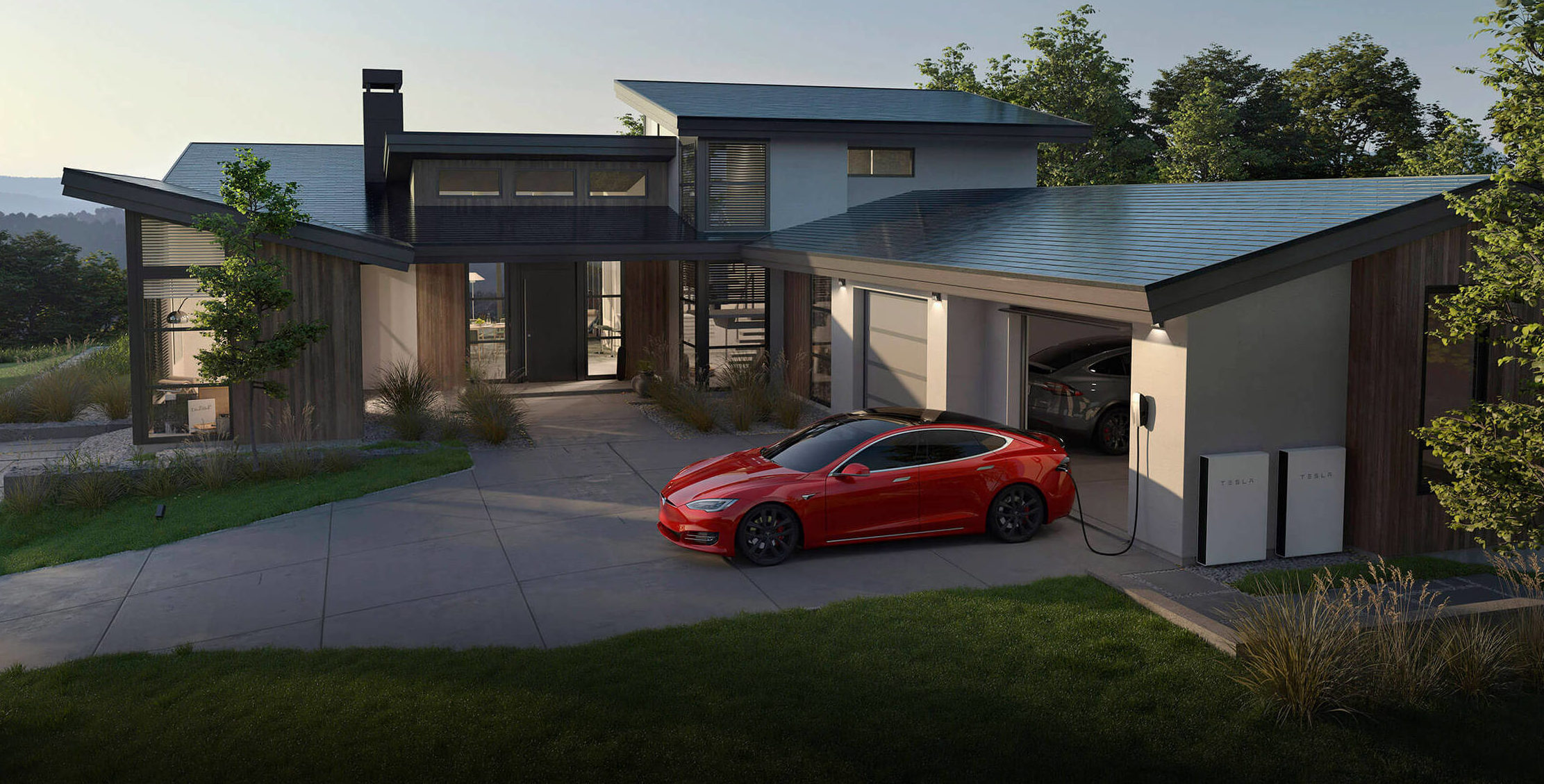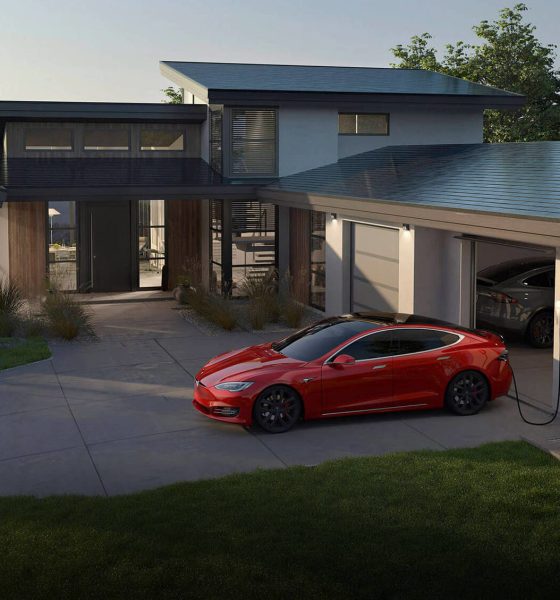

Energy
Tesla becomes world’s most valuable “automaker”, but the story goes well beyond cars
Tesla has officially become the world’s most valuable automaker, surpassing Toyota Motor Corporation on Wednesday morning. However, Tesla is much more than an automaker, and its success has a lot to do with its other sustainable projects.
Tesla now holds an over $185 billion market capitalization, meaning the total value of all of the automaker’s shares of stock is worth more than any other carmaker on Earth. Toyota now sits in second place, with its $178 billion market cap.
Interestingly enough, Tesla’s solidification as the most valuable carmaker is eye-opening simply because the company does so much more than build sustainable vehicles. Tesla has become a leader in energy storage and solar solutions, something that no other carmaker in the world can say. While car companies continue to chase after Tesla’s industry-leading efficiency and technology, its focus remains on accelerating sustainability as a whole, and not just through vehicle manufacturing.
https://twitter.com/ElonsWorld/status/1270712021357658114
At the time of writing, Tesla shares were trading a few dollars above the $1,000 per share mark. At that price, the market cap stands at $185.10 billion.
Tesla overtook German automaker Volkswagen for the second-most valuable carmaker label in February. Volkswagen currently sits in third with an $85.53 billion market cap.
TSLA stock has continued to rise amid rising production rates and sales figures in China, the world’s largest automotive market. However, developments in battery technology and rumors of an upcoming million-mile capable battery pack have helped the electric automaker’s stock price soar in the past months.
On the energy front, Tesla has ramped its Solar Roof to a 4 MW per week production rate. The company indicated in the Q1 2020 Update Letter that this is enough for 1,000 homes. The implementation of rental and subscription services has also helped the company’s solar initiatives be affordable for more people.
On the morning of June 10, TSLA stock officially crossed the $1,000 per share threshold for the first time after rumors of a production push of the company’s Semi circulated. The talks, which were confirmed by company CEO Elon Musk, indicated production volumes would no longer be limited. The Semi was geared for initial deliveries in 2021, but Musk has decided to ramp up the manufacturing of the company’s commercial vehicle.
Meanwhile, Model 3 continues to dominate in nearly every country it is available. The car was the best selling electric vehicle in China in May, selling over 11,000 units during the month. In the United States, the Model 3 was the most popular vehicle in California through the first quarter of 2020.
After Tesla managed to reopen its vehicle production facility in Fremont, California, following the COVID-19 pandemic, the company has ramped up production of the Model Y, which has become the company’s main focus for the coming months.
Tesla is also looking to increase its production rate by opening up a series of new manufacturing facilities across the globe. Not only will the company open a new U.S.-based factory in the Central United States. Tulsa, Oklahoma, and Austin, Texas, are the two finalists for the new factory, with a decision expected to be made within the coming months.
Additionally, the company’s foreign presence is being ramped up. Not only is Giga Shanghai’s Model Y facility, known as Phase 2A, coming along in a timely fashion, but Tesla’s construction crews also recently broke ground on Giga Berlin in Germany. Tesla plans to manufacture half-a-million vehicles a year in Germany, and rumors have even suggested another European production plant will be built somewhere in the United Kingdom.
Tesla is riding a wave of momentum that has taken it from a small, likely unsuccessful car startup that was plagued with issues in 2008, to the most valuable automaker in the world in 2020. Not only has Tesla established itself as the leader in American EV manufacturing, but the company has launched itself into an international powerhouse that has combined electric mobility with sustainable energy solutions to become an international sensation.

Cybertruck
Tesla updates Cybertruck owners about key Powershare feature

Tesla is updating Cybertruck owners on its timeline of a massive feature that has yet to ship: Powershare with Powerwall.
Powershare is a bidirectional charging feature exclusive to Cybertruck, which allows the vehicle’s battery to act as a portable power source for homes, appliances, tools, other EVs, and more. It was announced in late 2023 as part of Tesla’s push into vehicle-to-everything energy sharing, and acting as a giant portable charger is the main advantage, as it can provide backup power during outages.
Cybertruck’s Powershare system supports both vehicle-to-load (V2L) and vehicle-to-home (V2H), making it flexible and well-rounded for a variety of applications.
However, even though the feature was promised with Cybertruck, it has yet to be shipped to vehicles. Tesla communicated with owners through email recently regarding Powershare with Powerwall, which essentially has the pickup act as an extended battery.
Powerwall discharge would be prioritized before tapping into the truck’s larger pack.
However, Tesla is still working on getting the feature out to owners, an email said:
“We’re writing to let you know that the Powershare with Powerwall feature is still in development and is now scheduled for release in mid-2026.
This new release date gives us additional time to design and test this feature, ensuring its ability to communicate and optimize energy sharing between your vehicle and many configurations and generations of Powerwall. We are also using this time to develop additional Powershare features that will help us continue to accelerate the world’s transition to sustainable energy.”
Owners have expressed some real disappointment in Tesla’s continuous delays in releasing the feature, as it was expected to be released by late 2024, but now has been pushed back several times to mid-2026, according to the email.
Foundation Series Cybertruck buyers paid extra, expecting the feature to be rolled out with their vehicle upon pickup.
Cybertruck’s Lead Engineer, Wes Morrill, even commented on the holdup:
As a Cybertruck owner who also has Powerwall, I empathize with the disappointed comments.
To their credit, the team has delivered powershare functionality to Cybertruck customers who otherwise have no backup with development of the powershare gateway. As well as those with solar…
— Wes (@wmorrill3) December 12, 2025
He said that “it turned out to be much harder than anticipated to make powershare work seamlessly with existing Powerwalls through existing wall connectors. Two grid-forming devices need to negotiate who will form and who will follow, depending on the state of charge of each, and they need to do this without a network and through multiple generations of hardware, and test and validate this process through rigorous certifications to ensure grid safety.”
It’s nice to see the transparency, but it is justified for some Cybertruck owners to feel like they’ve been bait-and-switched.
Energy
Tesla starts hiring efforts for Texas Megafactory
Tesla’s Brookshire site is expected to produce 10,000 Megapacks annually, equal to 40 gigawatt hours of energy storage.

Tesla has officially begun hiring for its new $200 million Megafactory in Brookshire, Texas, a manufacturing hub expected to employ 1,500 people by 2028. The facility, which will build Tesla’s grid-scale Megapack batteries, is part of the company’s growing energy storage footprint.
Tesla’s hiring efforts for the Texas Megafactory are hinted at by the job openings currently active on the company’s Careers website.
Tesla’s Texas Megafactory
Tesla’s Brookshire site is expected to produce 10,000 Megapacks annually, equal to 40 gigawatt hours of energy storage, similar to the Lathrop Megafactory in California. Tesla’s Careers website currently lists over 30 job openings for the site, from engineers, welders, and project managers. Each of the openings is listed for Brookshire, Texas.
The company has leased two buildings in Empire West Business Park, with over $194 million in combined property and equipment investment. Tesla’s agreement with Waller County includes a 60% property tax abatement, contingent on meeting employment benchmarks: 375 jobs by 2026, 750 by 2027, and 1,500 by 2028, as noted in a report from the Houston Business Journal. Tesla is required to employ at least 1,500 workers in the facility through the rest of the 10-year abatement period.
Tesla’s clean energy boom
City officials have stated that Tesla’s arrival marks a turning point for the Texas city, as it highlights a shift from logistics to advanced clean energy manufacturing. Ramiro Bautista from Brookshire’s economic development office, highlighted this in a comment to the Journal.
“(Tesla) has great-paying jobs. Not just that, but the advanced manufacturing (and) clean energy is coming to the area,” he said. “So it’s not just your normal logistics manufacturing. This is advanced manufacturing coming to this area, and this brings a different type of job and investment into the local economy.”
Energy
Tesla and Samsung SDI in talks over new US battery storage deal: report
The update was related by industry sources and initially reported by South Korean news outlets.

Recent reports have suggested that Tesla and Samsung SDI are in talks over a potential partnership to supply batteries for large-scale energy storage systems (ESS).
The update was related by industry sources and initially reported by South Korean news outlets.
ESS batteries to be built at Samsung’s Indiana plant
As noted in a report from Korea JoongAng Daily, the demand for energy storage systems has been growing rapidly in North America, thanks in no small part to the surge in AI investments across numerous companies. With this in mind, Tesla has reportedly approached Samsung SDI about a potential battery supply deal.
The deal is reportedly worth over 3 trillion Korean won (approximately $2.11 billion) and will span three years, according to The Korea Global Economic Daily. A battery supply deal with Samsung SDI could make sense for Tesla as the company already has a grid-scale battery, the Megapack, which is perfect for industrial use. Samsung SDI could simply supply cells for the EV maker.
Production of the batteries would reportedly take place at Samsung SDI’s joint venture factory with Stellantis in Indiana, which is currently under construction. Samsung SDI recently announced plans to use part of that plant’s EV lines to produce cells for ESS, with a targeted capacity of 30 GWh by the end of next year.
Tesla and Samsung’s partnership
At present, only a handful of manufacturers, including Korea’s LG Energy Solution, Samsung SDI, SK On, and Japan’s Panasonic, are capable of producing energy storage-scale batteries domestically in the United States. A Samsung SDI official issued a comment about the matter, stating, “Nothing has been finalized regarding cooperation with Tesla.”
The possible energy storage system deal adds another layer to Tesla’s growing collaboration with Samsung, which is already in line as a partner in the upcoming production of Tesla’s AI5 and AI6 chips. Early sample manufacturing of the AI6 is expected to begin in South Korea, with mass production slated for Samsung’s Texas-based Taylor foundry when it starts operations.
The AI6 chip will power Tesla’s next wave of high-volume projects, including the Optimus humanoid robot and the autonomous Cybercab service. Musk has called the partnership with Samsung a “real collaboration,” adding that he personally plans to “walk the line” at the Taylor facility to speed up progress.








